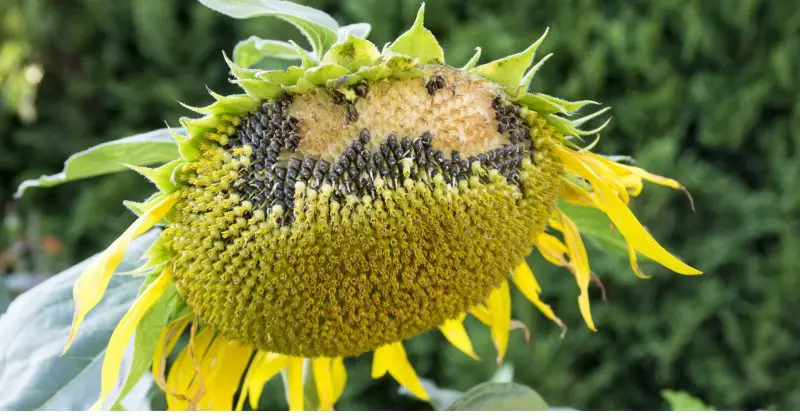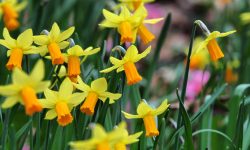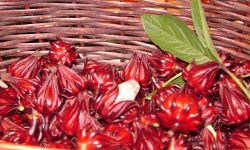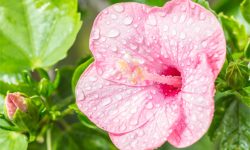Harvesting sunflower seeds from your own garden is a rewarding experience that combines the satisfaction of growing plants with the joy of enjoying fresh, natural seeds. Knowing how to harvest sunflower seeds from plants properly helps you collect mature and healthy seeds perfect for snacking or planting. This process requires careful timing and attention to detail to ensure the best results.
Many gardeners face challenges like harvesting seeds too early or losing them to birds and pests. Learning to recognize the signs of seed readiness and following effective harvesting methods can prevent these issues. With the right approach, sunflower seed harvesting becomes a straightforward and enjoyable task.
This guide covers all the essential steps involved in how to harvest sunflower seeds from plants successfully. From identifying when the seeds are ready to dry, extract, and store them correctly, you will have the knowledge needed for a bountiful seed harvest season after season.
Understanding the Sunflower Seed Development Process

Before diving into the harvesting process, it’s essential to understand how sunflower seeds develop on the plant. Sunflowers bloom with large flower heads composed of hundreds or even thousands of tiny individual flowers called florets. Each floret has the potential to develop into a seed once pollinated. Over time, the central disk of the flower head transitions from bright yellow petals to a dense cluster of seeds.
As the sunflower matures, the seeds grow plump and harden. The petals gradually wilt and fall off, leaving the seed head exposed. The maturation of seeds can take several weeks after the bloom begins, depending on the sunflower variety and environmental conditions. Recognizing the right time for harvesting is crucial to ensure that the seeds are fully developed and viable.
When is the Right Time to Harvest Sunflower Seeds?
Timing is one of the most important factors in harvesting sunflower seeds successfully. If you harvest too early, the seeds may be immature and poorly developed. If you wait too long, the seeds could fall from the head or become damaged by pests and weather.
Typically, sunflower seeds are ready to harvest when the back of the flower head turns yellow or brown, and the seeds themselves appear plump with a firm outer shell. The petals will have completely dried and fallen off. Another sign to look for is when the green bracts (the leaf-like structures around the flower head) dry out and turn brown as well.
In temperate climates, this usually occurs in late summer or early fall, but the exact timing depends on when you planted your sunflowers and the specific variety you are growing. Watching the plants closely as the seeds develop will help you determine the optimal harvesting window.
Preparing for Sunflower Seed Harvesting
Before you start harvesting, it’s important to prepare properly to protect your seeds and ensure a smooth process. Sunflower seeds can attract birds, squirrels, and other wildlife eager to feast on them, so consider measures to protect your plants if you’re harvesting directly in the garden.
You may want to use bird netting or other barriers to minimize seed loss. Additionally, check the weather forecast to avoid harvesting just before rain, as moisture can lead to mold or rot during storage.
Gather the tools you will need, such as garden scissors or pruners to cut the flower heads, gloves to protect your hands from the rough seed heads, and containers or bags to collect and store the seeds. Planning your harvest on a dry, sunny day will help ensure the seeds dry properly after picking.
Step-by-Step Guide to Harvest Sunflower Seeds from Plants
The harvesting process begins by carefully cutting the mature flower heads from the sunflower stalk. Using garden scissors or pruners, cut the head leaving about 12 to 18 inches of stem attached. This length helps in handling the heads during drying.
After cutting, hang the flower heads upside down in a warm, dry, and well-ventilated area. This hanging position allows air to circulate around the seeds, facilitating even drying and preventing mold. Some gardeners prefer to cover the heads loosely with a paper bag or mesh to protect them from insects and pests during this drying period.
The drying process can take anywhere from one to three weeks, depending on humidity and temperature. Proper drying is essential to avoid mold and to ensure the seeds remain viable for planting or safe for consumption.
Extracting Seeds from the Sunflower Head
Once the sunflower heads have dried completely, it’s time to extract the seeds. The seeds are attached tightly to the head and can be removed by rubbing the seed head with your hands or using a brush. For larger-scale harvesting, gently tapping the head against a hard surface can help dislodge the seeds.
During this process, discard any damaged or shriveled seeds, as they are unlikely to germinate or be good for eating. Quality seeds are typically plump, firm, and have a clean outer shell.
If you plan to save the seeds for planting, it is important to avoid damaging the seed coat. Handle the seeds carefully and clean them of any debris.
Cleaning and Drying the Harvested Seeds
After extracting the seeds, you need to clean them thoroughly to remove any plant material, dirt, or insects. Spread the seeds on a clean surface or use a fine sieve to separate out unwanted debris.
Following cleaning, the seeds should be dried further if there is any residual moisture. Place the seeds in a single layer on a dry towel, mesh screen, or paper in a cool, dry place with good air circulation. Stir the seeds occasionally to promote even drying.
Properly dried seeds can be stored safely for months without risk of mold or spoilage. The drying phase is especially critical if you intend to store seeds long term or use them for planting in the next growing season.
Storing Sunflower Seeds for Future Use
How you store your harvested sunflower seeds depends on whether you plan to eat them or plant them.
For seeds intended for consumption, store them in an airtight container in a cool, dark place such as a pantry or refrigerator. Keeping seeds away from heat, light, and humidity will preserve their freshness and prevent rancidity.
If you are saving seeds for planting, choose a dry, cool location such as a sealed envelope or paper bag stored in a refrigerator or another cold environment. Avoid using plastic bags for planting seeds, as moisture buildup can cause mold or premature sprouting.
Properly stored sunflower seeds can remain viable for planting for up to two to three years, although germination rates tend to decrease over time.
Common Challenges When Harvesting Sunflower Seeds and How to Avoid Them
Harvesting sunflower seeds may seem straightforward, but gardeners often face challenges that can reduce the quality and quantity of the yield.
One common issue is bird predation. Birds love sunflower seeds and can decimate heads before you have a chance to harvest. Using bird netting or covering the seed heads as they mature is an effective way to minimize losses.
Another challenge is moisture. Harvesting seeds too early or storing them improperly can result in mold growth, which ruins the seeds. Always ensure seeds are fully dry before storage and avoid harvesting during or just before rainy weather.
Pests such as squirrels, chipmunks, and insects may also attack sunflower seed heads. Physical barriers and close monitoring can help protect your crop.
Lastly, cutting flower heads too late might cause seeds to fall off naturally, leading to loss. Regularly inspecting your plants as seeds mature helps you harvest at the perfect time.
The Benefits of Harvesting Your Own Sunflower Seeds
Harvesting sunflower seeds from your own plants offers multiple benefits beyond simply enjoying homegrown snacks. Fresh seeds from your garden are often tastier and more nutritious compared to store-bought options. You also gain the satisfaction of completing the entire growing cycle, from seed to harvest.
Home-harvested seeds are ideal for planting the next season, ensuring you grow sunflowers adapted to your local climate and soil. Additionally, this practice can save money and promote sustainability by reducing reliance on commercial seed suppliers.
Sunflower seeds can be used in a variety of ways, including roasting, making sunflower oil, or adding to baked goods and salads. Knowing how to harvest and store them successfully extends their usability and enjoyment.
Tips for Growing Sunflowers That Produce High-Quality Seeds
To maximize the success of your sunflower seed harvest, it’s important to start with healthy, vigorous plants. Choosing sunflower varieties known for large, seed-heavy heads will increase your potential yield.
Plant sunflowers in well-drained soil with plenty of sunlight, as they thrive in full sun. Providing adequate water, especially during flowering and seed development stages, supports healthy seed formation.
Fertilizing the plants with balanced nutrients promotes growth and seed quality. Also, maintaining good spacing between plants improves air circulation and reduces disease risk, which can affect seed development.
By paying attention to growing conditions and pest control, you ensure your sunflower plants produce abundant, high-quality seeds ready for successful harvesting.
FAQ About How to Harvest Sunflower Seeds from Plants
When is the best time to harvest sunflower seeds from plants?
The best time to harvest sunflower seeds is when the back of the flower head turns yellow or brown, and the seeds are plump with a firm shell. The petals should have completely dried and fallen off.
How do I protect sunflower seeds from birds and pests before harvesting?
Using bird netting or covering the seed heads loosely with mesh or paper bags can help protect seeds from birds and pests while they mature on the plant.
Can I eat sunflower seeds right after harvesting?
No, sunflower seeds need to be properly dried before eating to avoid mold and ensure good taste. Dry them in a well-ventilated area for one to three weeks.
How should I store harvested sunflower seeds?
Store dried seeds in an airtight container in a cool, dry, and dark place. For seeds intended for planting, keep them in a paper envelope or bag in the refrigerator.
How long can harvested sunflower seeds remain viable for planting?
Properly stored sunflower seeds can remain viable for planting for up to two to three years, although germination rates may decline over time.
Conclusion
Harvesting sunflower seeds from plants successfully is a satisfying and enjoyable gardening endeavor that rewards patience and careful attention. Understanding the seed development process, recognizing the right time to harvest, preparing for collection, and properly drying and storing the seeds are all vital steps to ensure a bountiful yield.
By protecting your sunflowers from pests and moisture, handling seeds gently, and maintaining good growing practices, you can enjoy fresh sunflower seeds for snacking, cooking, or planting year after year. With this detailed guide, you are well-equipped to master the art of harvesting sunflower seeds and make the most of your vibrant garden.






